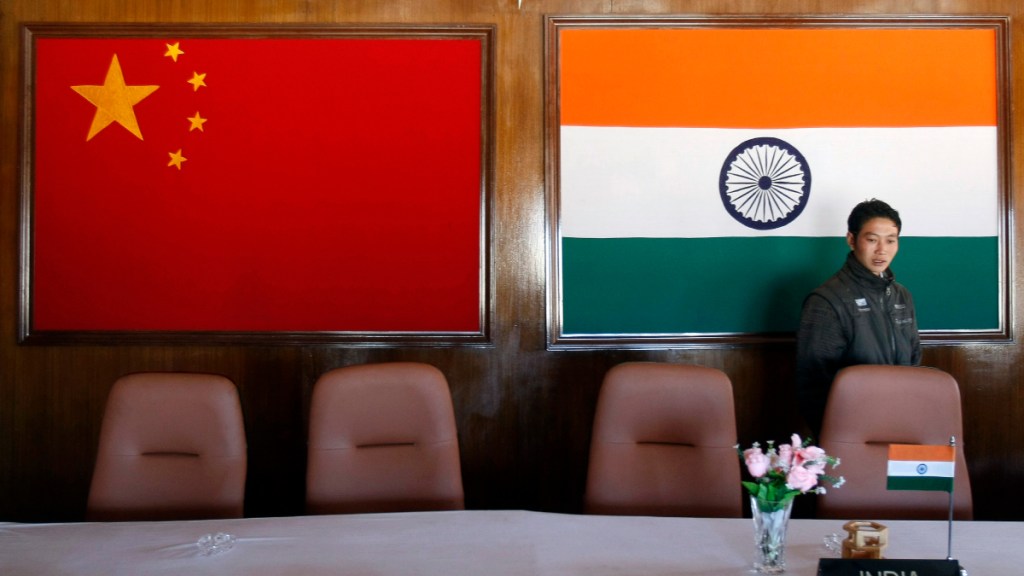By Lt Col Manoj K Channan, Veteran
The 20th round of talks between India and China, held on October 9-10, 2023, marked a significant step in the ongoing efforts to resolve the border dispute along the Line of Actual Control (LAC). These talks have garnered attention not only for their implications in the context of Sino-Indian relations but also in light of the broader global geopolitical landscape. In this article, we delve into the outcomes of the 20th round of talks and explore the motivations behind
China’s approach to the border issue
We also assess the economic challenges faced by China and their potential impact on the border dispute. Additionally, we emphasize the importance of vigilance and monitoring in ensuring the enforcement of agreements reached during these discussions.
Understanding the Significance
The border dispute between India and China has persisted for decades and has witnessed periodic flare-ups. The LAC, a de facto border, has been a source of tension, with both countries staking territorial claims. Against this backdrop, the 20th round of talks assumes great significance for several reasons:
Geo-Political Landscape
The talks come at a time when the world is grappling with multiple geopolitical crises, including the Ukraine-Russia conflict and the tensions between Hamas and Israel. The containment of a third flare-up in the Himalayas is crucial in avoiding further destabilization in an already turbulent global scenario.
China’s Internal Power Dynamics
Xi Jinping’s consolidation of power within China has been a subject of international interest. The removal of presidential term limits in 2018 allowed him to potentially remain in power indefinitely. However, recent developments, such as Xi’s absence from international summits, suggest possible opposition within the Chinese Communist Party (CCP), particularly from figures like Premier Li Keqiang and Wang Yang.
China’s Economic Challenges
China faces economic challenges, including slower-than-expected retail sales and industrial production growth. Despite steady GDP growth, the economy remains shaky due to weak consumer and business demand. The emphasis on economic stability, high-quality growth, and countercyclical policies underscores the need for maintaining regional stability, including along the LAC.
Border Dispute Specifics
While the talks are welcome steps towards resolution, they do not address key points of contention, such as the Daulat Beg Oldie and the Depsang region. These issues continue to pose challenges to a comprehensive resolution of the border dispute.
Motivations Behind China’s Approach
To comprehend China’s approach to the border issue, it’s essential to consider internal and external factors:
Internal Power Struggle
Xi Jinping’s pursuit of power consolidation and the reported opposition within the CCP could have influenced China’s approach. The need for regional stability could be pushing China to avoid escalation on multiple fronts, including the border dispute.
Economic Considerations
China’s economic challenges and the emphasis on economic stability highlight the importance of avoiding conflict that could disrupt economic growth. A stable border situation is conducive to economic development.
Global Image
China is keenly aware of its global image, and escalating border conflicts could tarnish its reputation. Maintaining peace and stability along the LAC is consistent with its pursuit of a responsible global leadership role.
Economic Challenges and Their Impact
China’s economic challenges, as evidenced by slower retail sales and industrial production growth, can have implications for the border dispute.
GDP Growth Targets
China has set a modest annual GDP growth target of around 5 percent for 2023. Meeting this target is crucial for the government’s economic stability goals and could further encourage a peaceful approach to the border issue.
Service Sector Emphasis
The reliance on the service sector for economic growth underscores the importance of regional stability. Disruptions in border areas could impact trade and commerce, affecting China’s service sector.
Countercyclical Policies
The need for strong countercyclical policies indicates China’s commitment to maintaining long-term economic stability. A peaceful border is aligned with these policy objectives.
Structural Reforms
Structural reforms are vital for China’s long-term economic goals. A stable border can facilitate these reforms without distractions from external conflicts.
Job Market
Youth unemployment and job market stability are important domestic concerns. Ensuring peace along the border can contribute to job market recovery.
Ensuring Vigilance and Enforcement:
While the 20th round of talks has made progress, it is imperative to remain vigilant and monitor the situation closely. China’s adherence to agreements is crucial for lasting peace along the LAC.
Some key considerations include: –
Transparency
Both countries should maintain transparent communication channels to prevent misunderstandings and misinterpretations of agreements.
Joint Monitoring
Establishing mechanisms for joint monitoring of the border areas can help prevent violations and incursions.
Diplomatic Engagement
Continued diplomatic engagement is essential to address unresolved issues, such as Daulat Beg Oldie and the Depsang region.
Global Diplomacy
Engaging with the international community to reinforce the importance of peace and stability in the region can exert pressure on both sides to adhere to agreements.
Conclusion:
The 20th round of talks between India and China represents a significant step towards resolving the border dispute. In the midst of global geopolitical challenges and China’s internal dynamics, maintaining peace along the LAC is crucial. China’s economic challenges further underscore the importance of regional stability. However, vigilance and close monitoring are essential to ensure that agreements reached during these talks are enforced, and unresolved issues are addressed. The path to a lasting resolution remains challenging, but it is essential for the peace and prosperity of the region.
The author is an Indian Army Veteran.
Disclaimer: Views expressed are personal and do not reflect the official position or policy of Financial Express Online. Reproducing this content without permission is prohibited.
